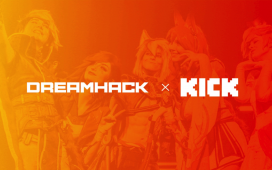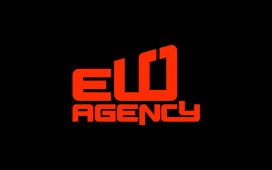Esports has become a billion-dollar industry, but if it is going to get much bigger, then brands have to buy into it in a much bigger way when it comes to sponsorships.
Those brands have to chase after millennials, who aren’t watching TV or traditional sports and are easier found in games, esports, and digital media. But to be effective, the brands have to find an authentic voice that speaks to the new generation. We talked about these issues in a panel at CES 2020, the big tech trade show in Las Vegas.
Our panel included Josh Cella, head of global partnerships for Activision Blizzard Esports; Grace Dolan, vice president of home entertainment integrated marketing at Samsung Electronics America; Sarah Iooss, head of sales for Americas at Twitch; and Bryan de Zayas, global director of marketing at Dell.
Here’s an edited transcript of our panel. If you prefer, you can watch it on video here.

Above: Brands, gaming, and esports panel at CES 2020.
Image Credit: CTA
Josh Cella: I oversee the partnership business for Activision Blizzard in esports. I’ve been with the company for four years, since before the Overwatch League launch, up to where we are today going into season three of the Overwatch League and launching the Call of Duty league in two weeks.
Grace Dolan: I’m the vice president of integrated marketing for the home division of Samsung. I’ve been at Samsung for about three years, and during that time is when we started to look and learn more and invest in this gaming community and audience.
Sarah Iooss: I lead the amazing sales team at Twitch for North America. I joined about seven months ago. I’m happy to be here to tell everyone about the incredible Twitch community/
Bryan de Zayas: I manage Alienware and Dell from a global marketing perspective for Dell. I’ve been in the gaming space with Alienware since 2003, so going on a lot of years.
GamesBeat: The CTA did its own study recently, and they said esports sponsorship totals jumped from $342 million in revenue in 2018 to $470 million in 2019. Advertising increased from $176 million to $220 million over the same time. Esports is hot. We’ve established that. But tell us why gaming and esports are important to your brands.
Cella: Activision Blizzard is historically a game creator. We have three different publishing units — Activision, Blizzard, and King — across console, PC, and mobile games. That’s the heartbeat of our company. That’s where all the value is, and the history with our fans around the world. We’ve started to develop other businesses like esports that are tapping into that passion. It’s what we do on a daily basis.
Dolan: I’d probably argue that this is at the heartbeat of what you guys do. I’m probably the least endemic of the brands here. In my view, gaming, with esports included under that umbrella, is just critical. If you look at what gaming is today, it’s not a niche interest the way it’s historically been perceived. If you look at the number of consumers in the U.S. that are gaming, it’s 67-68 percent. More Americans are gaming than are not. It’s just part of mainstream entertainment, and it’s a passion point.
As a TV manufacturer, we’re very closely related to the hardware that connects and gives gamers these gaming experiences. For me it’s about understanding this audience, and from an innovation point, understanding how we can make our products better so the gaming experience can be better. And then from a marketing and relationship-building perspective, how do I understand you better so I can be more relevant to you in everything that we do and every way we interact?

Above: Left to right: Dean Takahashi of GamesBeat, Josh Cella of Activision Blizzard, Grace Dolan of Samsung, Sarah Iooss of Twitch, and Bryan de Zayas of Dell/Alienware.
Image Credit: CTA
Iooss: Gaming the foundation of Twitch. It’s the lifeblood. It’s where we began. It represents a huge opportunity. That’s the word I would use, as a jumping-off point to build this incredible community that’s expanded beyond gaming and beyond esports. We’re growing right along with the industry. It certainly is the foundation.
De Zayas: For Alienware, gaming is at the foundation as well. The company was founded with the goal of making PCs that make it easier for gamers to do what they want to, which is play video games. That’s very much at the foundation. When we’re building new technology and new innovation–as it pertains to the people in the audience, when you’re thinking about gaming and the marketplace and how you can participate, it’s important to know what your lane is. What can you own and drive? At Alienware we believe we can deliver the best technology for gamers. That’s the role we play, and why gaming is so important to us.

Above: Josh Cella, head of global partnerships at Activision Blizzard Esports.
Image Credit: CTA
GamesBeat: We can agree that traditional sports is still bigger in a lot of ways. My question is, why? If all these demographic numbers tell us that gaming is this important and esports is growing and the audiences are bigger, why is the NBA still so big? Why have those brand dollars not shifted over to gaming?
Cella: I get that question from my CEO. We do compare ourselves a lot to traditional sports. We’ve taken a lot of those elements, what we think are the best elements of structure and consistency from traditional sports leagues, and then we’ve tried to layer in new elements that we’ve been able to innovate.
Overwatch League, to use that as the example, is going into its third season, and traditional sports leagues have been around for decades, 50 years or more in some instances. The other thing we run up against, because we do deal with that comparison, and not really joking–they never really had the commercial expectations that we have back then. They started as a way to organize sports and grew from there. We’re coming around in an age when there are higher expectations from a monetization standpoint.
We’re fine with that. Everything is growing very healthily. We think the potential is absolutely there. The power of gaming is that it’s ubiquitous. When Blizzard launches a game, the next day, anyone who has a PC and has WiFi available can access that game. You can hit a light switch and that game is live everywhere. That power doesn’t exist in traditional sports. As an industry we’re tapping into that. It’s going to take some time, but we’re on a great track for it.
Iooss: We’re at that acceleration point. When you think about fandom, the fans and the experience, there’s a lot we borrow from traditional sports, or that we’re inspired by. The point we’re at now for esports is just organization, opportunity, investment, an economy around it. What’s happening now is that there’s a lot of ways they can play together and be inspired by one another, but we wouldn’t be up here if we didn’t think that esports is going to go even further.
De Zayas: To add on to it, you asked why traditional sports are ahead in that regard. I also think it’s generational. Esports, if you think about it, probably started around 2005. This is a very young market. When you think of traditional sports like football or basketball, it feels like they’ve been around since the beginning of time. Where are in the digital age, it’s going to accelerate super fast. A hundred years go by, or it might just take us 10 years in digital time.
GamesBeat: For Dell and Alienware, how long would you say has it been since you really got comfortable and dove into esports?
De Zayas: Right around 2005 is when Alienware started seeing the potential of what esports could be, sponsoring and doing awards around tournaments at the time. Giving out gift prizes, things like that. But back then it was very different. You’d go to physical events, like E3 or PAX. That’s where these events would happen. Today you have things like the Overwatch League and other leagues out there where you have stadiums built for it. That transition, or that evolution, has been pretty quick when you think about it. You’re talking about 12-14 years. It’s not that long.

Above: Sarah Iooss is head of sales for Twitch Americas.
Image Credit: CTA
Iooss: Also, the opportunity for the way you can consume esports–it’s collapsing the distance between the professional and the fan. There’s a way to interact with them, especially on Twitch, which is really special. It’s that proximity. It’s the way you can feel there’s zero distance between you and the athlete.
GamesBeat: Getting back to why traditional sports are still bigger than esports, there’s a role that brands play here. They’re not automatically swapping those dollars around just yet. I’m assuming there’s a period of time where they’ll pause and get comfortable with this. Is that fair to say, that everyone had to go through a process of getting comfortable with it?
Dolan: Certainly, and that goes to Sarah’s point about investment. It all adds up together to create this larger infrastructure of esports. I don’t think anyone is comfortable with esports investment yet. That’s because no one really knows for sure what’s the right way to do it, because there isn’t a sound infrastructure yet.
With traditional sports, what’s easy is–here are the sports, and within each sport, there’s a certain audience segment that follows it. You match up your demos like clockwork. That same universe lives within gaming as well. We all know that a person who plays Forza is completely different from someone who plays Overwatch. But we’re just starting to really pull those segmentations together to create infrastructure for branding investment.
No one is certain how to do it. But if we use all the traditional learnings about how you invest your marketing dollars within any interest or passion area, it’s very similar. I think there’s just a world of opportunity. We’re getting there.
GamesBeat: Bryan, your comfort level has probably ratcheted up a bit.
De Zayas: Yeah. A bit of a difference there is just where our brand started and where we were formed. It was in gaming. Being native to the landscape, we understood–okay, great, people are playing games. They’re playing competitively. People are watching them online. Enjoying that makes sense to me.
We have ratcheted up across esports over these last several years. To Grace’s point, it’s starting to now yet to–there’s more infrastructure. There’s more around how you can go activate these kinds of partnerships. What we think we can do is help move that on through technology. But for the investment piece there needs to be infrastructure.
GamesBeat: If we’re going to be helpful to the audience, what would be your recommendation as far as how they should pull the trigger on going into games and going into esports?
Cella: We’ve talked to people across the board. To your point, all brands are doing their own due diligence and have different comfort levels already established. There’s a lot of different entry points. Twitch offers a variety of them. What we’re focused on is developing these professional leagues, very similar to traditional sports. There’s individual streamer relationships. There’s a variety. It‘s hard for us to speak to it. We obviously think the esports league, the development we’ve helped usher in, has created a lot of the security for people to invest in. That’s where we’re making the large bet.

Above: Grace Dolan is vice president of home entertainment integrated marketing at Samsung Electronics America.
Image Credit: CTA
Dolan: I would start, foundationally, when you’re thinking of investing in anything–first, where’s your audience? Is your audience for your brand here in this specific world, whether it’s the Overwatch League or some other area of esports that you might be evaluating? And then returns. That’s obviously a huge question. What are the returns you can expect on your investment?
What’s great about gaming is that so much of it is digitally grounded. It’s easy to see what is your reach, how many impressions you’re really making. Then you just test. We’ve worked with Twitch extensively to just start piloting little things. For the monitor business, and also the SSD business, which is also under my portfolio, we did the first IRL rig build. We thought, “I don’t know, do you think people will like it?” It turns out they loved it. Okay, you get that this is important. Pilot and go from there.
Iooss: I would actually say–first and foremost, there’s nothing to be scared of, especially when you root it in audience. We often tell our partners that a great first step in is to just come on to our platform. You’ll reach a ton of 18-34 year olds. Run your beautiful creative there. That’s a way to begin.
I would give a big shout-out to Grace and her team, because the key thing they did was listen and evolve in the moment. We’ve done remarkable work together, and a lot of it has to do with their willingness to test and evolve and listen. Both listening to the Twitch audience, but also to the team at Twitch and vice versa.
Dolan: It’s the same with Blizzard. We supported BlizzCon this year.
Cella: Absolutely. I was just going to add, there’s a huge investment in measurement to make investors feel secure in making that investment. From day one we hired Nielsen to come up with the AMA that allows brands to compare a rating versus a traditional sports rating in specific demographics. We have a whole slew of other measurement vendors we hire, and we pay for all of that ourselves, because we know that there was uncertainty in the beginning, going back a few years, and there still is. We want to combat that by having all these tools so that we can measure the investment and make sure every brand feels secure.
GamesBeat: Across esports, does everyone feel that there’s enough data there already being collected and shared with brands, to the point that they can make good decisions? Or is there still a fair amount of work to do?
Cella: We didn’t think there was previously. In 2018 when we launched the Overwatch League, we made it our top priority to bring Nielsen in and compare us to traditional sports. We knew–we sent out the first press release on our average minute audience. A very prominent reporter wrote back to us saying, “Thank you very much for being the first esports organization to give me something that I can compare to an NBA rating.” That was hugely important to us. We had the confidence to put ourselves up against traditional sports. Every company is adding and layering on more measurements. We’re in a much better place now than we were a few years ago.














